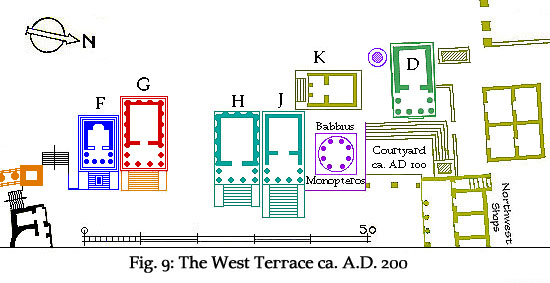
In the last major construction phase, thought to
be during the reign of Commodus (AD 180-193), but perhaps as late as
Septimius Severus (AD 193-211), the Poseidon Fountain was replaced by two temples
(H and J), one to Herakles and one to Dionysos. These two gods had
particular importance to Septimius Severus (appearing together on his coinage
celebrating the Ludi Saeculares of AD 204), so it seems best to date
this phase to his reign.
Eric Kondratieff wrote the text for this page. This nine-sequence phase plan was created from an electronic redrawing/adaptation of the three phase plans found in R.L. Scranton, Corinth I, iii: Monuments in the Lower Agora and North of the Archaic Temple. Princeton, 1951. The sequence in which the buildings appear differs considerably from Scranton's original phases.

